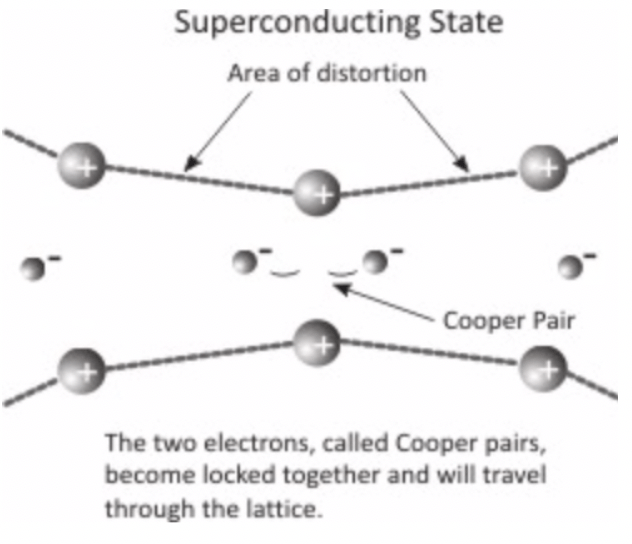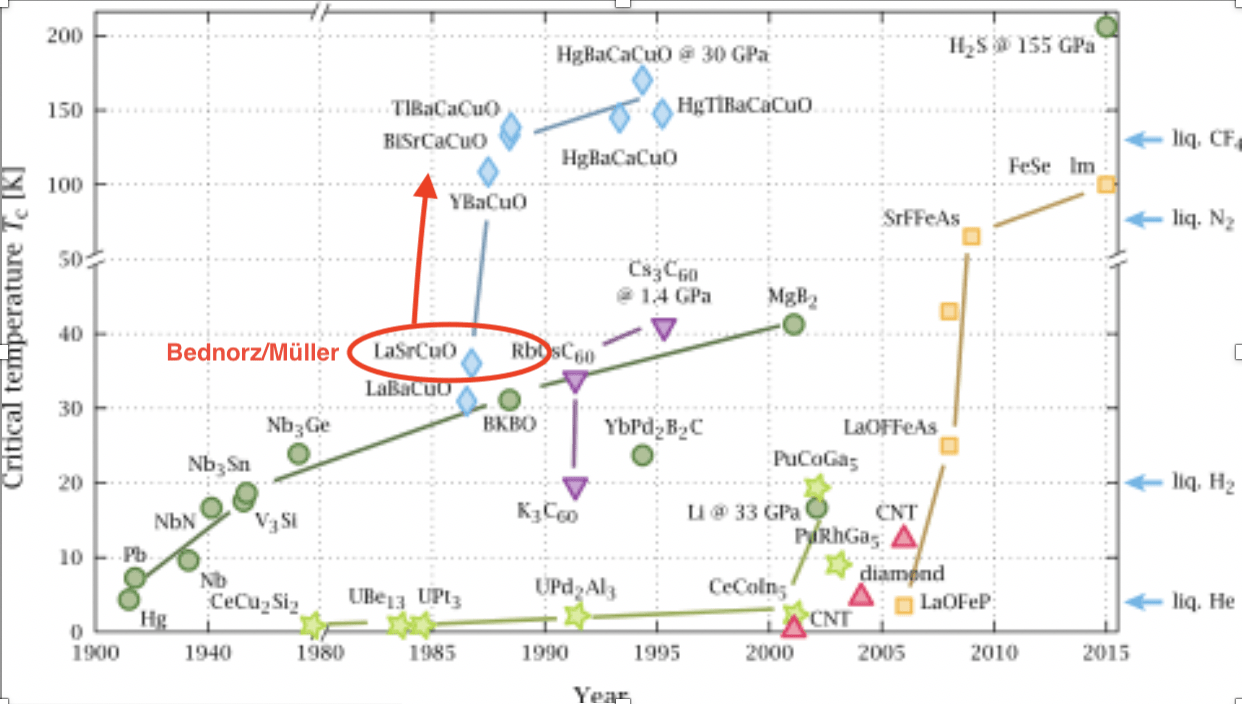1986: High Temperature Superconductors
High-temperature superconductors (high-Tc or HTS) are materials that behave as superconductors at unusually high temperatures. The first high-Tc superconductor was discovered in 1986 by IBM researchers Georg Bednorz and K. Alex Müller, who were awarded the 1987 Nobel Prize in Physics “for their important break-through in the discovery of superconductivity in ceramic materials”.

High-temperature superconductors (high-Tc or HTS) are materials that behave as superconductors at unusually high temperatures. The first high-Tc superconductor was discovered in 1986 by IBM researchers Georg Bednorz and K. Alex Müller, who were awarded the 1987 Nobel Prize in Physics “for their important break-through in the discovery of superconductivity in ceramic materials”.
What is Superconductivity?
In a superconductor, the resistance drops abruptly to zero when the material is cooled below its critical temperature. An electric current through a loop of superconducting wire can persist indefinitely with no power source.According to the conventional BCS theory it is caused by the condensation of Cooper pairs into a boson-like state. A Cooper pair is a loosely bound pair of electrons with equal and opposite momentum and spin.

High temperature superconductivity
In the early 1980s, Müller began searching for substances that would become superconductive at higher temperatures. The highest critical temperature (Tc) attainable at that time was about 23K. In 1983 Müller recruited Georg Bednorz to IBM, to help systematically test various oxides. A few recent studies had indicated these materials might super conduct. In 1986 the two succeeded in achieving superconductivity in lanthanum barium copper oxide (LBCO) at a temperature of 35 K.Over the previous 75 years the critical temperature had risen from 11 K in 1911 to 23K in 1973 where it had remained for 13 years. Thus 35 K represented a massive jump.
In 1987 Müller and Bednorz were jointly awarded the Nobel Prize in physics – the shortest recorded time between the discovery and the award of the prize.
Their discovery triggered a flood of fresh research into high temperature superconductivity. The highest known critical temperature currently lies at about 205 K (-70 C) exhibited by Hydrogen Sulfide under extremely high pressure.

A timeline of critical temperatures of superconductors. The Bednorz-Müller discovery is ringed in red, the arrow illustrating the impact of their discovery on further research in the field.
About K. Alex Müller b. 1927 Basel
Müller was born in Basel, Switzerland, on 20 April 1927. He studied Physics and Mathematics at the ETH in Zürich. He took courses by Wolfgang Pauli, who made a deep impression on him. After receiving his degree. He worked for one year, then returned to ETH for a PhD, submitting his thesis at the end of 1957.
References and further reading


Please Note:
You may use one of these HTML tags and attributes: <a href="" title=""> <abbr title=""> <acronym title=""> <b> <blockquote cite=""> <cite> <code> <del datetime=""> <em> <i> <q cite=""> <s> <strike> <strong>